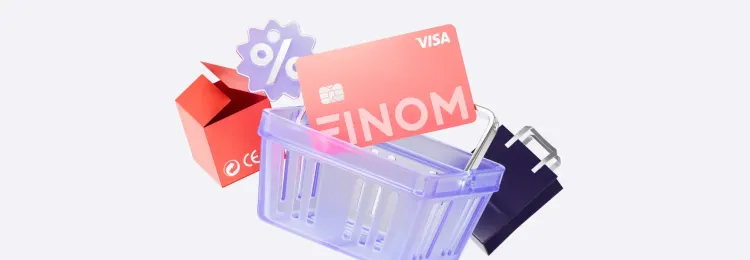We tell you what CVV code is, where it is located on your bank card, why it is needed, and how to protect yourself from the fraudsters who try to bypass it
CVV code — what is it and why is it needed? Online shopping is something you can’t imagine your life without today. While placing an order online, you have to provide the vendor with details such as your credit card number, expiration date, and a CVV code. Without this information, transactions can’t be processed. However, it’s imperative that you keep your CVV security code a secret in order to protect your financial details against fraud and abusive activity of unauthorized third parties.
Even though your debit or credit cards remain safely hidden in your wallet, staying indoors doesn’t insulate you against online scams. What does a CVV code stand for, where do you find it and why is it so important not to share it with anyone? Read on to get the answers to these questions.
What Is a CVV Code?
A CVV (card verification value) is a universal term for a three-, sometimes four-digit security code that is present on the back or front of most cards, whether debit or credit. A CVV code was designed to increase card security and prevent online fraud; it generally serves to verify that you're the legitimate owner of the card. Credit card companies have their own acronyms for card verification codes:
| Name | Stands For | Card Issuer |
|---|---|---|
| CVV2 | Card Verification Value Code | Visa |
| CVC | Card Validation Code | Mastercard |
| CSC | Card Security Code | Debit Card |
| CID | Card Identification Code | Discover |
Besides the differences in naming, the codes are also distinguished by the number of digits. The security codes for Discover, Mastercard, and Visa are three-digit, while for American Express, it is a four-digit number.
There is a widespread misconception that CVVs are just randomly generated numbers. However, banks use specific algorithms to generate the security codes using the following chunks of information:
- Account number
- Expiration date
- Data Encryption Standard (DES) keys
- A three-number service code
For clear reasons, banks keep these procedures in the strictest confidence.
Discover our business accountWhere Is the CVV on a Card?
CVV codes are always printed on cards. However, location of cvvs on a card may vary depending on the card issuer. Thus, Visa, Mastercard, and Discover typically place CVVs on the back of cards, precisely at the far-right corner of the card, next to the signature of the owner. American Express cards usually have their four-digit codes on the front of the card, right above the credit card number. Cards issued by other companies may have the CVVs in another location, for instance, below the credit card number on the front or somewhere on the back of the card.
For security reasons, it's hard to locate your CVV code if you don't have the card in your possession. Therefore, in the majority of cases, you can't access your CVV code online. However, there is room for exceptions, as some companies display the complete credit card information in their mobile banking apps.
If you experience difficulties finding the security code or it's worn down to the extent it's impossible to read, it's better to contact your card issuer.
How Do CVV Codes Work?
The operational principle of card security codes relies on two-factor verification. As the name implies, the two-factor authentication is based on the rule that a cardholder should provide two pieces of information in order to buy something online. These are usually a CVV code and a credit card number, with the CVV verifying that the card is in your physical possession (at least at the present moment). Therefore, a CVV is a great tool that helps financial institutions prevent criminal activity and theft. Such a system makes it considerably more difficult for swindlers to use stolen information for fraudulent purposes.
If you enter the CVV code wrong, the bank will decline the transaction. Specific regulations prohibit vendors from storing CVV information of their clients. However, some online transactions can be authorized without a CVV security code. For example, subscription providers often require CVVs to be entered only during the very first payment (at the sign-up). From that moment on, subsequent purchases are made without repeatedly providing financial details.
The CVV number consists of two parts:
● A magnetic strip covers the first part of the CVV. This part is composed of essential sensitive data integral to the respective debit card. This data is read by magnetic reader machines when you swipe your card through a payment terminal in a shop.
● The three- or four-digit number represents the second part of the CVV. You enter this code when you need to make an online transaction. The security code is one of the most crucial advantages of a debit or credit card.
Learn about free invoicing serviceWhat Happens if You Enter the Wrong CVV?
If you enter the CVV code incorrectly, the bank will decline the transaction. This is because if the CVV is entered incorrectly, it may indicate that the card is being used fraudulently, so the transaction will be rejected as a precaution. Some merchants may also ask for additional verification if the wrong CVV is entered.
Specific regulations prohibit vendors from storing CVV information of their clients. However, some online transactions can be authorized without a CVV security code. For example, subscription providers often require CVVs to be entered only during the very first payment (at the sign-up). From that moment on, subsequent purchases are made without repeatedly providing financial details.
How Does a CVV Differ from a PIN?
It's vital to understand that regardless of the CVV code's length or acronym, it is not a part of the card number. Neither is it a PIN, and it has nothing to do with the expiration date of the card. These pieces of information stand alone and are independent of each other.
People frequently confuse PINs and CVVs. So, what are the major differences between these two numbers?
- A PIN stands for a "personal identification number" created by a user. Though it's generally represented by a four-digit number, some card issuers ask their clients to use longer numbers for PINs. A PIN is never the same as a CVV code. PINs for credit cards serve for the purposes of cash advances; PINs for debit cards are used to withdraw cash or initiate an offline purchase.
- Card-issuing banks automatically generate CVVs and print these security codes on the card. Though banks provide you with a temporary PIN on card issuance, in most cases, you will have to change it to a number you make up yourself. Such a procedure does not apply to a CVV, as you don't have any control over it.
Does the CVV Code Offer Security, and Can It Be Bypassed by Fraudsters?
Although a CVV grants a cardholder a fundamental layer of protection, and fraud becomes more challenging to exercise, it is still not impossible.
The chances that fraudsters will make use of your card without obtaining the CVV security code are low but never zero. Cardholders are still vulnerable if their card number is somehow disclosed. For instance, some websites do not require entering CVV codes to make a purchase.
Cybercriminals employ various techniques in order to obtain your sensitive data. Swindlers often use copycat websites to trick you into entering your credit or debit card number alongside a CVV number. They may attempt to bypass CVV codes through various methods, including phishing scams, skimming devices, and using stolen card information. However, using a CVV code is an important security measure in preventing unauthorized transactions, and most legitimate businesses will require the CVV code as a verification step during online transactions. It's important to be vigilant about protecting your sensitive information, such as credit card details, and report any suspicious activity to your bank or financial institution.
Sometimes it is possible for a transaction to be successful even if the wrong CVV is entered, but this is unlikely. Some merchants may not check the CVV or may have a different fraud detection system in place that allows a transaction to go through with an incorrect CVV. If this happens, it is best to contact the merchant and the bank to ensure that the transaction is legitimate and to take necessary steps to prevent any further fraud.
Is it possible for someone to use your debit or credit card with just the card number and the CVV? Yes, this type of fraud is known as "card-not-present" fraud, as the thief does not have possession of the physical card. This type of fraud is becoming more common with the rise of online shopping and e-commerce.
However, it is important to note that many merchants and financial institutions have additional security measures in place to prevent this type of activity. For example, a thief would also need to know the expiration date and the cardholder's name to make a purchase. Some merchants may also require additional verification, such as a billing address or phone number, to confirm the identity of the cardholder.
What Are the Best Ways to Protect Your CVV?
Some card issuers try to bypass the issue of CVV security by providing their clients with virtual cards that have pins generated for every new online purchase. Finom provides such a feature - explore all the benefits of a virtual card in a few clicks. Even without a virtual card, you can easily avoid falling victim to a scam. Try the following safeguard tips:
- Never post photos of your bank cards on social media. As mentioned above, scammers don't need your CVV number to make purchases on some websites. Sometimes all they need to know is a card number.
- Make use of antivirus software. Install it on your PC to protect your credit/debit card information from being stolen by fraudsters when you are shopping online.
- Ignore suspicious requests from unknown phone numbers or emails. Bank employees will never force you into sharing such sensitive data as your CVV code or card number. They can only ask you to name the last four digits of the card number. Never click on unfamiliar links sent by strangers, even if they try to impersonate a legal representative of your bank.
- Make sure you are shopping on a secure website. A secure website encrypts transmitted data and has a padlock icon next to the left of the website URL. Secure websites' URLs always start with https (instead of http), where the letter "s" stands for "secure." Most modern websites are equipped with the layer technology of secure sockets.
Guarding your CVV code is your duty. Once a scammer obtains the complete set of your financial data, which includes your card number, its expiration date, and a CVV number, you can say goodbye to your money.
You can safely share the CVV code with trusted vendors. Moreover, one doesn't need to provide the CVV code when making offline purchases.
A Final Word
The CVV code is definitely the most critical number present on your card. Even though it’s hard to believe that some things should be kept secret for family and friends, it’s true when it comes to financial data. The full name of the cardholder, the date of issue, the expiration date, the card number are better (but not mandatory) to be kept in secret, but your security code is one thing that should never be shared with anyone.
You can also read about CVV codes in French (CVV de carte bancaire), German (Die CVV Nummer), and Italian (CVV code).
Finom offers a wide range of financial services, including the issuance of virtual and plastic debit cards (we talked about what virtual cards are here).
Consider ordering a Finom card if you want to enjoy up to 3% cashback on all purchases. Manage everything in a convenient mobile app (Finom for Android, Finom for IOS): reset your PIN, set monthly spending limits, and much more. Finom loves making your life easier!
Last articles

Finom plans are changing – what it means for you

The Best CRMs for Small Businesses: How to Find Your Perfect Software

Finom Raises €50M in Series B Funding Led by General Catalyst and Northzone

Passkeys: Powering Finom’s Security Upgrade

Pro Forma Invoice: What It Is and Its Meaning

PO vs. Invoice: What Are the Differences Between These Financial Terms?

Direct Debit: What It Is and What Are the Advantages?


